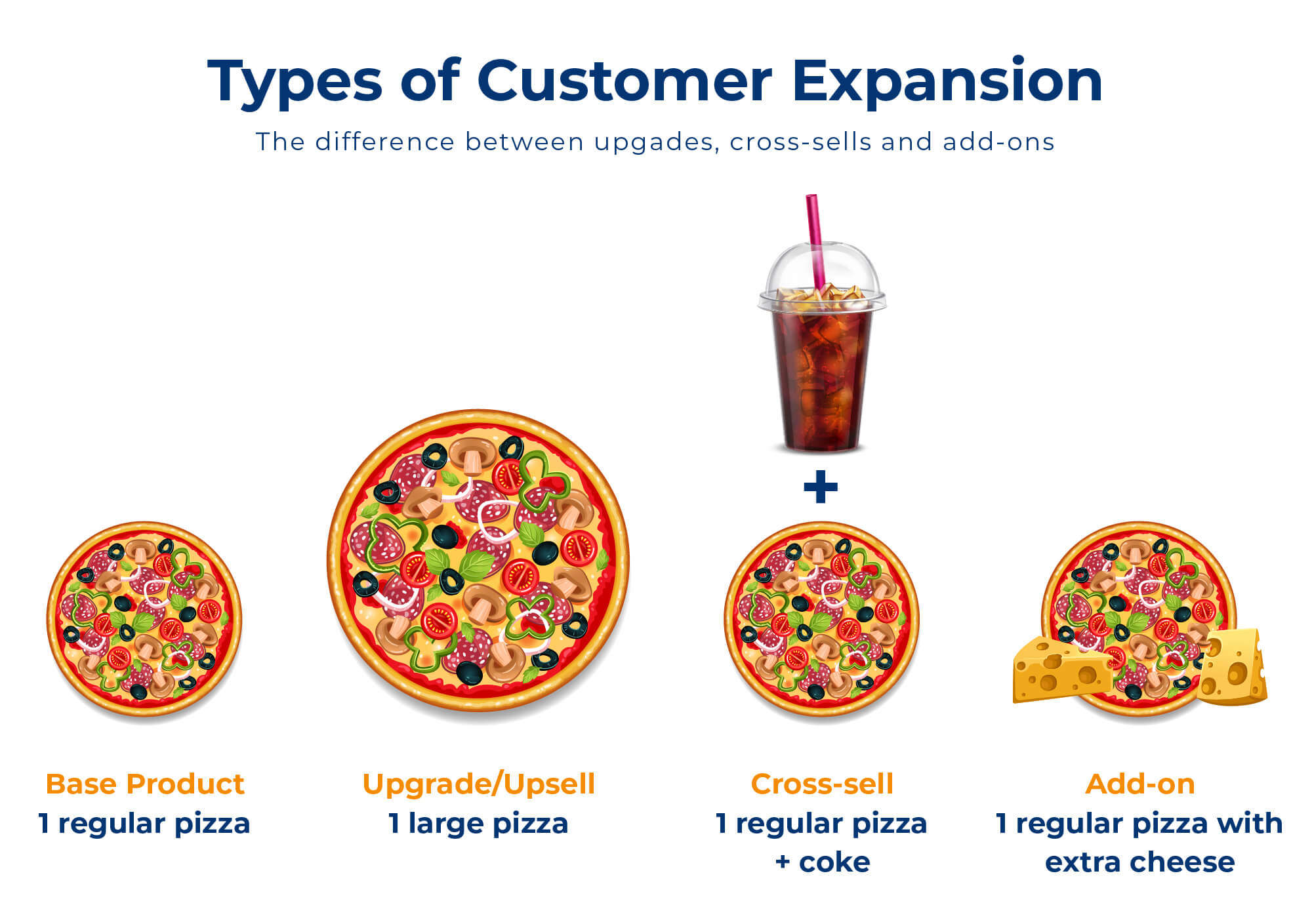
Acquiring a new customer can cost five times more than retaining an existing one.
Imagine the amount of time, energy, and resources that are squandered on acquiring new customers. This is why organizations are emphasizing on customer renewals. But, what about scaling up? You cannot solely rely on renewals for that.
This is where a customer expansion strategy can make all the difference.
A strategic plan to expand your customers once they have onboarded helps tap into a plethora of growth opportunities and hit the ground running. Moreover, upselling or cross-selling to an existing customer is easier than acquiring a new one because they are already aware of the benefits your products and services provide.
This blog post sheds light on the meaning, types, and best practices of customer expansion. Let’s get rolling.
Types of Customer Expansion
Customer expansion is the process of creating more value for existing customers; it can be executed in any of the following ways:
- Upselling: Also referred to as upgrading, upselling is a process of offering a better or a higher-priced version of your product.
- Cross-Selling: It is a process of offering a complementary product.
- Add-Ons: It is a process of improving your customer’s current subscription by offering additional features or functionality.

Best Practices for Successful Customer Expansion
If you are looking for some tips and tricks to build an efficacious customer expansion strategy, then the following practices will certainly help you hit the bull’s eye.
1. Have a Dedicated Customer Success Team
More often than not, the support team is at the forefront of upselling or cross-selling. Since they don’t have the complete picture of how customers are engaging with your brand, they might fail to identify and seize the right opportunity. This is where a dedicated customer success team can save the day.
The prime goal of customer success managers (CSMs) is to help customers achieve their next benchmark. Unlike support reps, they aim to provide proactive support by offering solutions to a problem that hasn’t risen yet. Therefore, making them the right fit to manage account expansion by recommending products or services that helps the customer realize their business objectives and increase the likelihood of upselling or cross-selling.
2. Know Thy Customer
Just like not every prospect can be a new customer, not every existing customer qualifies for expansion. Once a dedicated customer success team is in place, it can help identify and prioritize accounts fit for expansion. Although assessing user personas is the first step in defining your target audience, keep an eye out on demographic and psychographic data as well to know your audience better. This ensures that you are spending resources on upgrading or cross-selling to customers with high lifetime value.
3. Send Targeted Emails
Do you have multiple pricing plans or add-ons and upsells? If yes, then targeted emails should be non-negotiable in your customer expansion strategy.
One of the most common mistakes that companies commit is limiting their email marketing efforts to new leads or free trial users. But, who says you cannot sell to your existing customer over emails?
Here are a few tips to write effective emails to your existing customers: keep it succinct; send a personalized email with product and service recommendations that fixes their problem; direct them to a specific landing page instead of a generic one; and add interrogatory subject lines to make the email enticing and improve open rates.
4. Employ a ‘Problem Compass’
Customer expansion can be doomed from the very beginning if done without analysis or with irrelevant offers. Use cognitive technology and insights engine to track and analyze user journeys; thereby identifying what’s impeding brands to flourish, and let those hindrances guide you like a compass while upselling or cross-selling. This way, you can align your customer expansion strategy with their own journey.
5. Align User Interface with Their Hurdles
One of the best times to prompt customers to upgrade or buy add-ons is when they are already signed in and using your product. Create personalized UIs while taking in account their hurdles and prompt a relevant expansion offer accordingly. Also, do not forget to pay great attention to their intent, preferences, and the entire journey while curating the UI.
6. Review Milestones After Expansion
After a successful customer expansion, reviewing milestones can add value in multiple ways. Firstly, assessing the value extracted from the additional products, features, or services can help CSMs during the quarterly business review. Secondly, the effectiveness of expansion helps to build customer trust and loyalty as they rest assured of not being exploited for profits.
Want to Know What a Successful Customer Expansion Strategy Looks Like?
Then, watch our webinar where John Ragsdale, Distinguished VP of Technology Research at TSIA, and Vishal Sharma, CTO of SearchUnify, unveil how you can scale customer expansion, customer success, and customer onboarding with cognitive technology.











